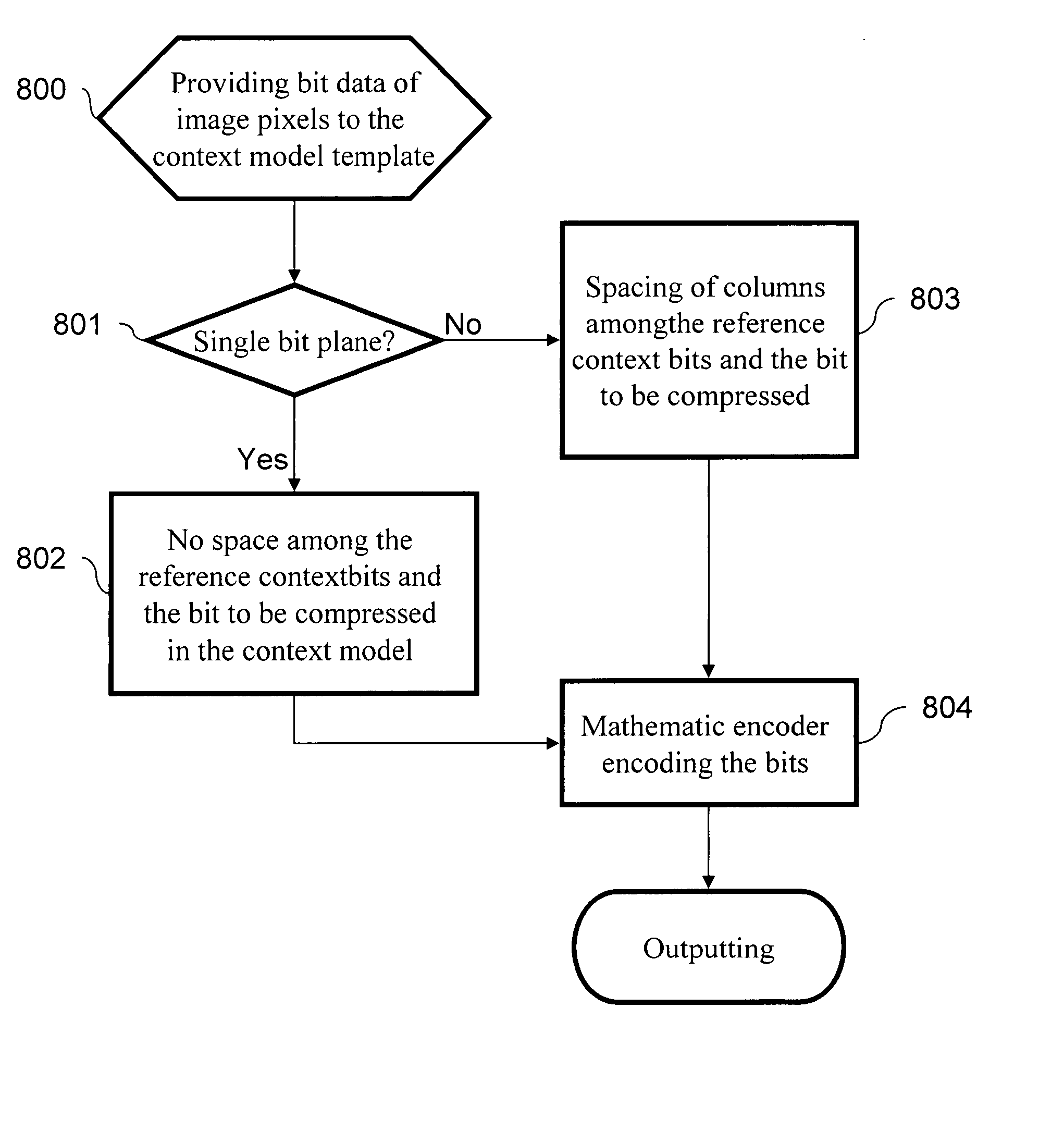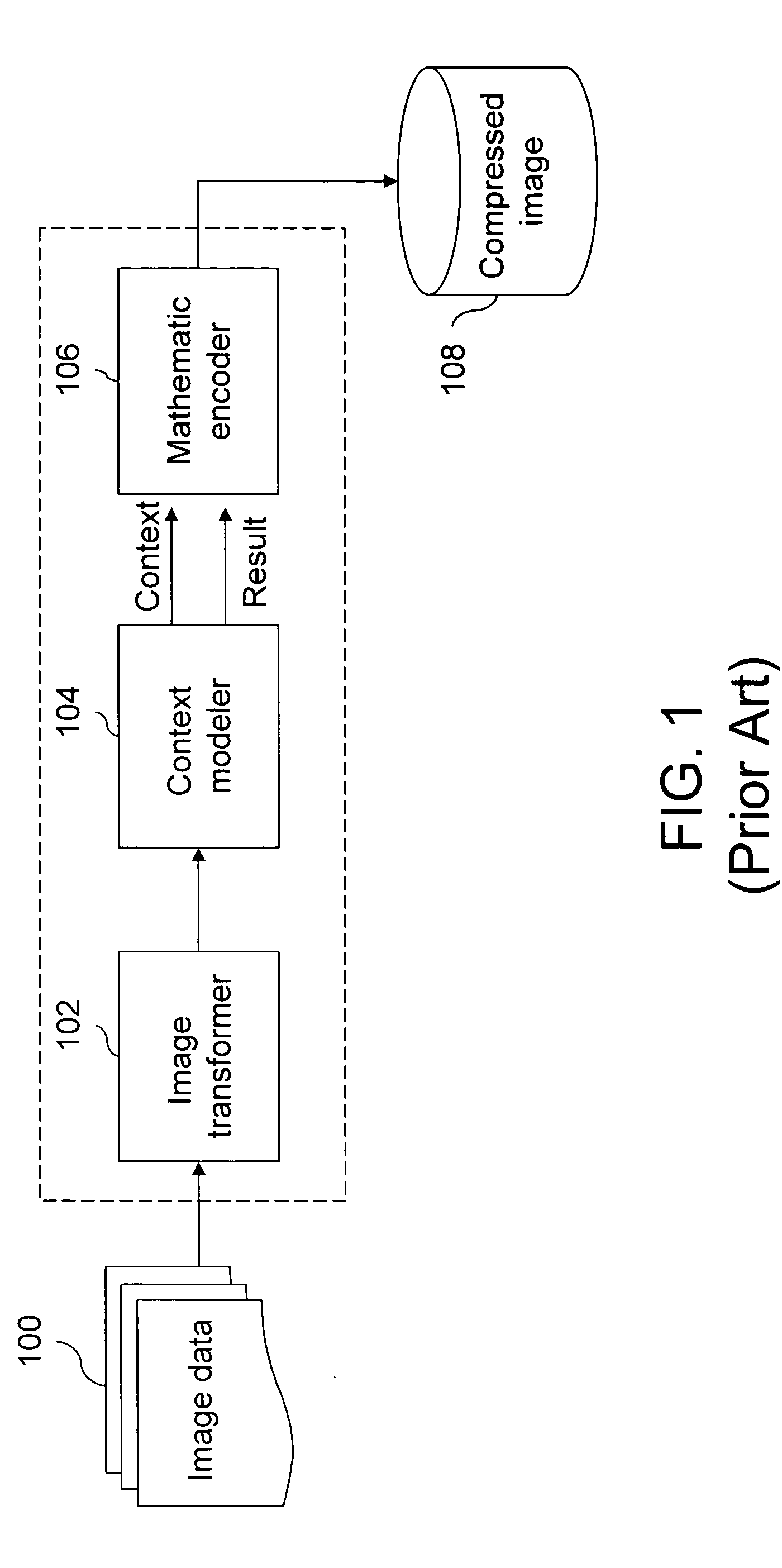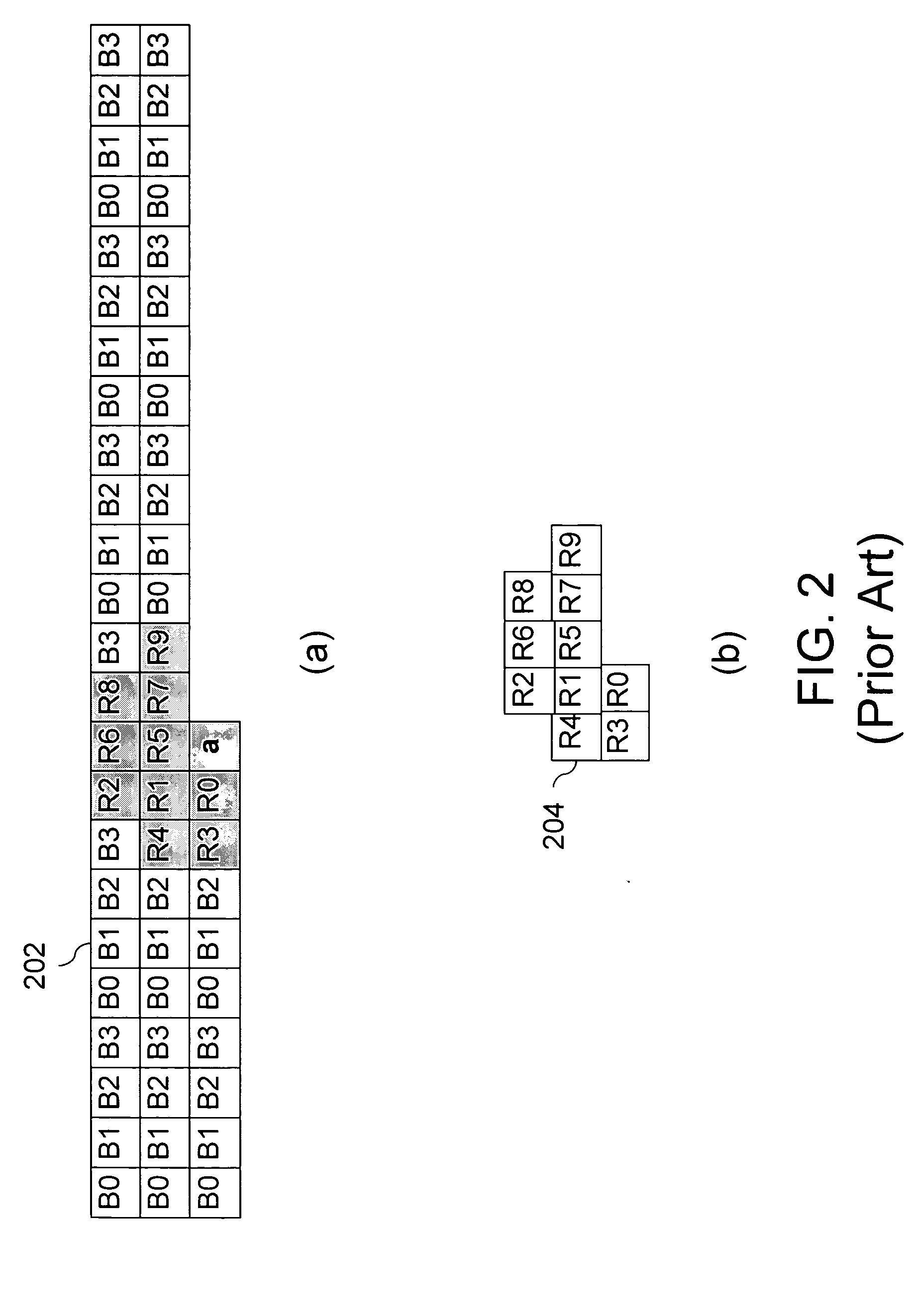Image compression/decompression apparatus and method
- Summary
- Abstract
- Description
- Claims
- Application Information
AI Technical Summary
Benefits of technology
Problems solved by technology
Method used
Image
Examples
Embodiment Construction
[0021] A digital image is represented by a two-dimensional pixel array, in which each pixel has a position in the image grid. For a color image, each pixel has a color value. For example, as shown in FIG. 4, a bitmap image 400 has 3*3 pixels. However practically, an image may include much more, such as 1024*1024, color pixels; and each pixel can be selected from one of 16.8 million (24-bit) colors.
[0022] The upper portion of FIG. 4 illustrates a 3*3 pixels image 400. Each pixel is labeled as P00, p01, p10, etc., in which the first number represents the row position of the pixel, and the second number represents the column position of the pixel.
[0023] Supposing each pixel in FIG. 4 is represented by 4 bits (each bit is 1 or 0). However actually, a pixel can be represented by 2 bits, 6 bits, 8 bits or others according to the application requirements. Then, in the lower portion of FIG. 4, a bit array 402 correspondent to the image 400 is presented. The 4-bit value represents the posi...
PUM
 Login to View More
Login to View More Abstract
Description
Claims
Application Information
 Login to View More
Login to View More - R&D
- Intellectual Property
- Life Sciences
- Materials
- Tech Scout
- Unparalleled Data Quality
- Higher Quality Content
- 60% Fewer Hallucinations
Browse by: Latest US Patents, China's latest patents, Technical Efficacy Thesaurus, Application Domain, Technology Topic, Popular Technical Reports.
© 2025 PatSnap. All rights reserved.Legal|Privacy policy|Modern Slavery Act Transparency Statement|Sitemap|About US| Contact US: help@patsnap.com



